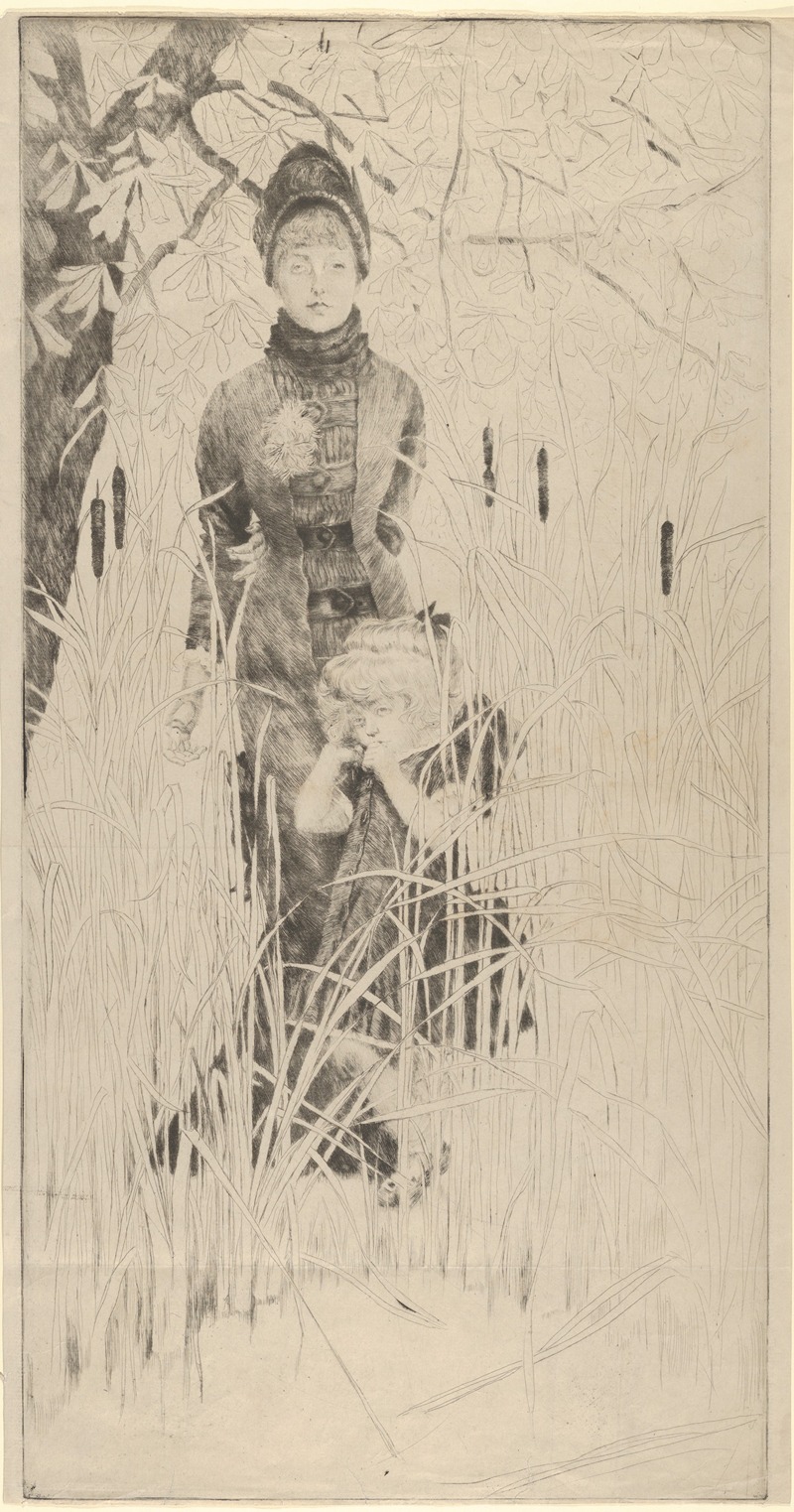
Orphan
A hand-painted replica of James Tissot’s masterpiece Orphan, meticulously crafted by professional artists to capture the true essence of the original. Each piece is created with museum-quality canvas and rare mineral pigments, carefully painted by experienced artists with delicate brushstrokes and rich, layered colors to perfectly recreate the texture of the original artwork. Unlike machine-printed reproductions, this hand-painted version brings the painting to life, infused with the artist’s emotions and skill in every stroke. Whether for personal collection or home decoration, it instantly elevates the artistic atmosphere of any space.
James Tissot, a French painter and illustrator, is known for his detailed and often narrative-driven works that capture the nuances of 19th-century society. One of his lesser-known paintings is "Orphan," which reflects his interest in themes of social realism and emotional depth.
James Tissot was born on October 15, 1836, in Nantes, France. He studied at the École des Beaux-Arts in Paris and became associated with the Parisian art scene in the mid-19th century. Tissot's early works were influenced by the academic style, but he later developed a unique approach that combined elements of realism and impressionism. His paintings often depicted scenes of contemporary life, capturing the fashion, architecture, and social dynamics of his time.
"Orphan" is a poignant example of Tissot's ability to convey emotion and narrative through his art. The painting portrays a young child, presumably an orphan, in a setting that suggests both vulnerability and resilience. Tissot's use of color, light, and composition draws the viewer's attention to the child's expression and posture, evoking a sense of empathy and contemplation.
Tissot's interest in themes of social realism is evident in "Orphan." During the 19th century, issues such as poverty, orphanhood, and social inequality were prevalent in Europe, and artists like Tissot sought to highlight these concerns through their work. By focusing on the figure of an orphan, Tissot not only captures the innocence and fragility of childhood but also comments on the broader social issues of his time.
The painting is characterized by Tissot's meticulous attention to detail. His ability to render textures, fabrics, and facial expressions with precision adds depth to the narrative. The setting, while not explicitly detailed, provides enough context to suggest a story, inviting viewers to imagine the circumstances surrounding the young subject.
Tissot's career underwent significant changes following the Franco-Prussian War and the Paris Commune in the early 1870s. He moved to London, where he continued to paint and gained considerable success. His works from this period often focused on the lives of the British upper class, but he maintained an interest in themes of personal and social significance, as seen in "Orphan."
While "Orphan" may not be as widely recognized as some of Tissot's other works, it remains an important piece within his oeuvre. It exemplifies his skill in combining narrative and emotion, as well as his commitment to exploring the human condition through art. Tissot's legacy as an artist is marked by his ability to capture the complexities of his era, and "Orphan" is a testament to his enduring impact on the art world.
James Tissot passed away on August 8, 1902, in Buillon, France. His works continue to be studied and appreciated for their technical mastery and insightful portrayal of 19th-century life. "Orphan" stands as a reminder of Tissot's dedication to capturing the stories and emotions of his time, offering viewers a glimpse into the world of a child facing uncertain circumstances.


















